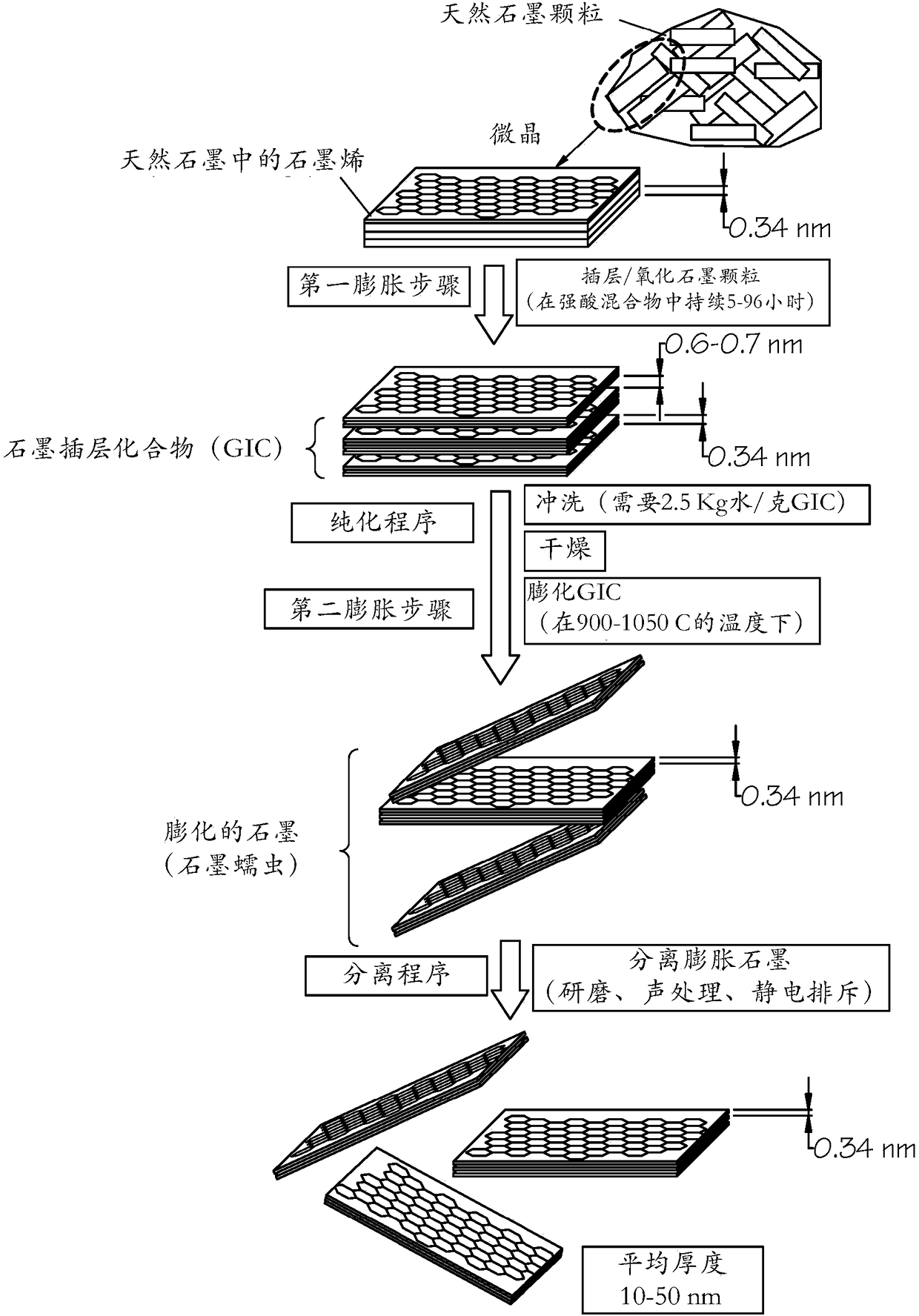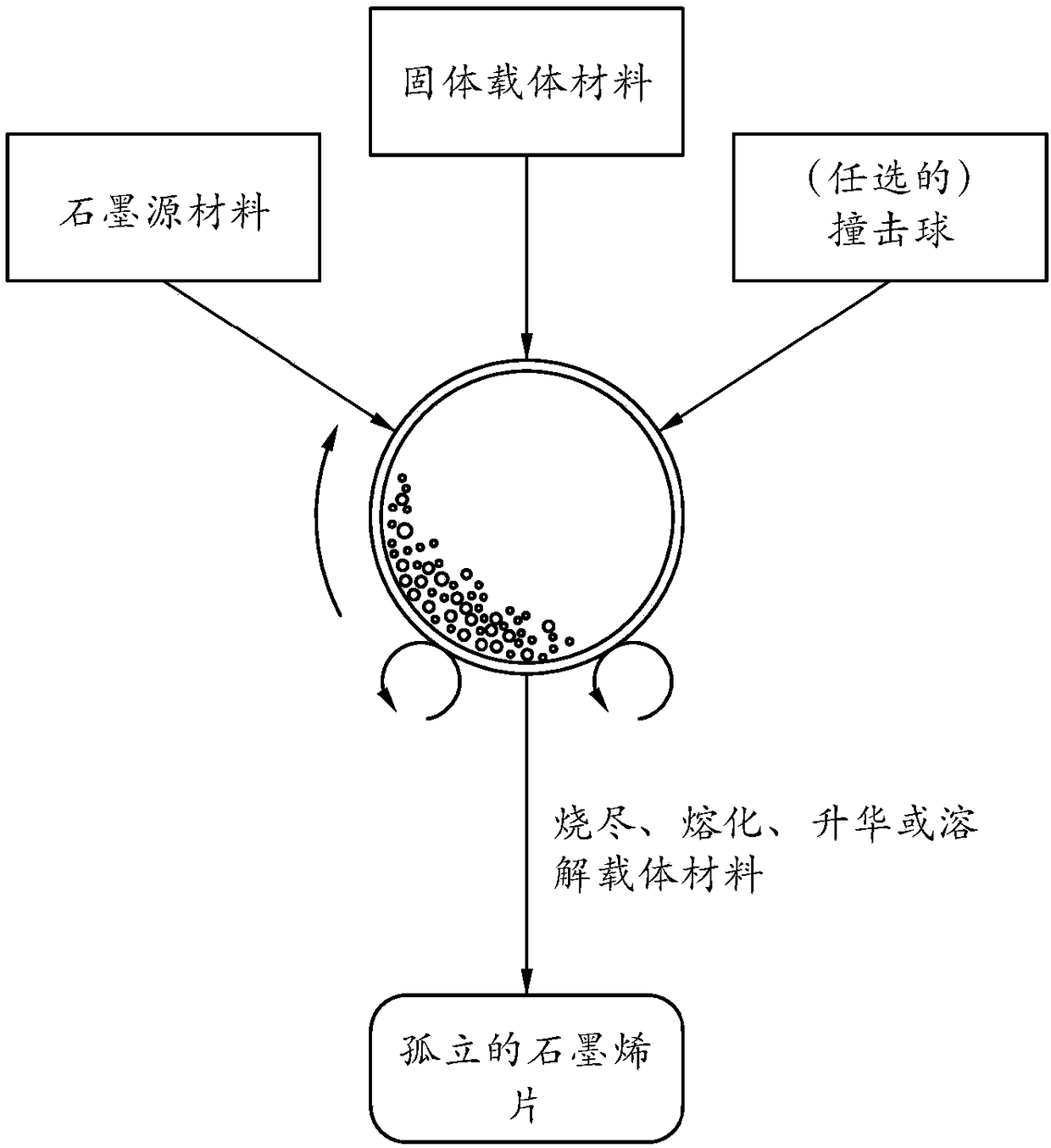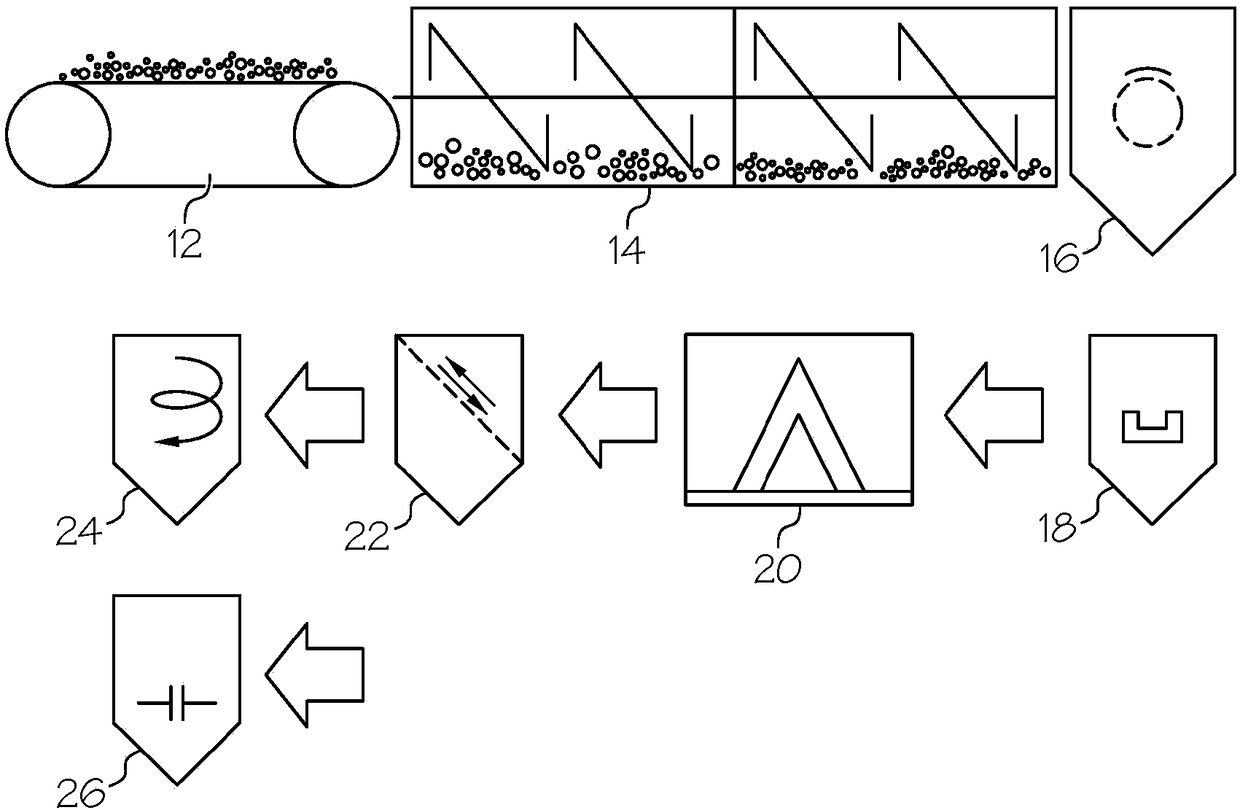Chemical-free production of graphene materials
A graphite material, graphene technology, applied in graphene, inorganic chemistry, nanotechnology for materials and surface science, etc., can solve cumbersome washing and purification steps, unsuitable for mass production of isolated graphene sheets, long intercalation and oxidation time
- Summary
- Abstract
- Description
- Claims
- Application Information
AI Technical Summary
Problems solved by technology
Method used
Image
Examples
example 1
[0082] Example 1: Isolated NGP (graphene sheet) from flake graphite via a polypropylene powder based support
[0083] In the experiment, 1 kg of polypropylene pellets, 50 g of flake graphite, 50 mesh (average particle size 0.18 mm; Asbury Carbons, Asbury NJ) and 250 g A magnetic stainless steel needle (Raytech Industries, Middletown CT) was placed in the ball mill vessel. The ball mill was operated at 300 rpm for 4 hours. The container cap is removed and the stainless steel needle is removed via the magnet. The polymeric support material was found to be coated with a black carbon layer. The support material was placed on a 50 mesh screen and a small amount of raw flake graphite was removed. The coated support material was then placed in a crucible in a ventilated furnace at 600°C. After cooling, the furnace was opened to reveal a crucible filled with isolated graphene flake powder.
[0084] Although polypropylene (PP) is used here as an example, the support material used ...
example 2
[0085] Example 2: NGP from expanded graphite via ABS polymer
[0086] In the experiment, 100 grams of ABS pellets as solid carrier material particles were placed in a 16 oz plastic container along with 5 grams of expanded graphite. The container was placed in an acoustic mixing unit (Resodyn Acoustic mixer company) and processed for 30 minutes. After processing, the support material was found to be coated with a thin layer of carbon. The support material was placed in acetone and subjected to ultrasonic energy to accelerate the dissolution of the ABS. The solution was filtered using an appropriate filter and washed four times with additional acetone. Following washing, the filtrate was dried in a vacuum oven set at 60°C for 2 hours.
example 3
[0087] Example 3: Functionalization of Graphene via PLA via Mesocarbon Microspheres (MCMB)
[0088]In one example, 100 grams of PLA pellets (carrier material) and 2 grams of MCMB (China Steel Chemical Co., Taiwan) were placed in a vibratory ball mill that also contained magnetic stainless steel impactor particles, and process for 2 hours. Subsequently, DETA was added and the material mixture was processed for another 2 hours. The vibratory mill was then turned on, and the support material was found to be coated with a black coating of graphene. Magnetic steel particles are removed with a magnet. The support material was rinsed with isopropanol and placed on a vacuum filter. The vacuum filter was heated to 160°C and vacuum was applied, resulting in removal of the PLA.
[0089] In separate experiments, the following functional group-containing species were introduced into the resulting graphene sheets: amino acids, sulfonic acid groups (--SO 3 H), 2-azidoethanol, polyamide ...
PUM
| Property | Measurement | Unit |
|---|---|---|
| electrical conductivity | aaaaa | aaaaa |
| electrical conductivity | aaaaa | aaaaa |
| size | aaaaa | aaaaa |
Abstract
Description
Claims
Application Information
 Login to View More
Login to View More - R&D
- Intellectual Property
- Life Sciences
- Materials
- Tech Scout
- Unparalleled Data Quality
- Higher Quality Content
- 60% Fewer Hallucinations
Browse by: Latest US Patents, China's latest patents, Technical Efficacy Thesaurus, Application Domain, Technology Topic, Popular Technical Reports.
© 2025 PatSnap. All rights reserved.Legal|Privacy policy|Modern Slavery Act Transparency Statement|Sitemap|About US| Contact US: help@patsnap.com



